# A tibble: 344 × 8
species island bill_length_mm bill_depth_mm flipper_length_mm body_mass_g
<fct> <fct> <dbl> <dbl> <int> <int>
1 Adelie Torgersen 39.1 18.7 181 3750
2 Adelie Torgersen 39.5 17.4 186 3800
3 Adelie Torgersen 40.3 18 195 3250
4 Adelie Torgersen NA NA NA NA
5 Adelie Torgersen 36.7 19.3 193 3450
6 Adelie Torgersen 39.3 20.6 190 3650
7 Adelie Torgersen 38.9 17.8 181 3625
8 Adelie Torgersen 39.2 19.6 195 4675
9 Adelie Torgersen 34.1 18.1 193 3475
10 Adelie Torgersen 42 20.2 190 4250
# ℹ 334 more rows
# ℹ 2 more variables: sex <fct>, year <int>Workshop: Dealing with Data in R
Visualizing Data in R
A primer on ggplot2
steffilazerte
@steffilazerte@fosstodon.org
@steffilazerte
steffilazerte.ca

Compiled: 2025-01-12
First things first
Save previous script
Open New File
(make sure you’re in the RStudio Project)
Write library(tidyverse) at the top
Save this new script
(consider names like figs.R or 2_figures.R)
Outline
1. Figures with ggplot2 (A tidyverse package)
- Basic plot
- Common plot types
- Plotting by categories
- Adding statistics
- Customizing plots
- Annotating plots
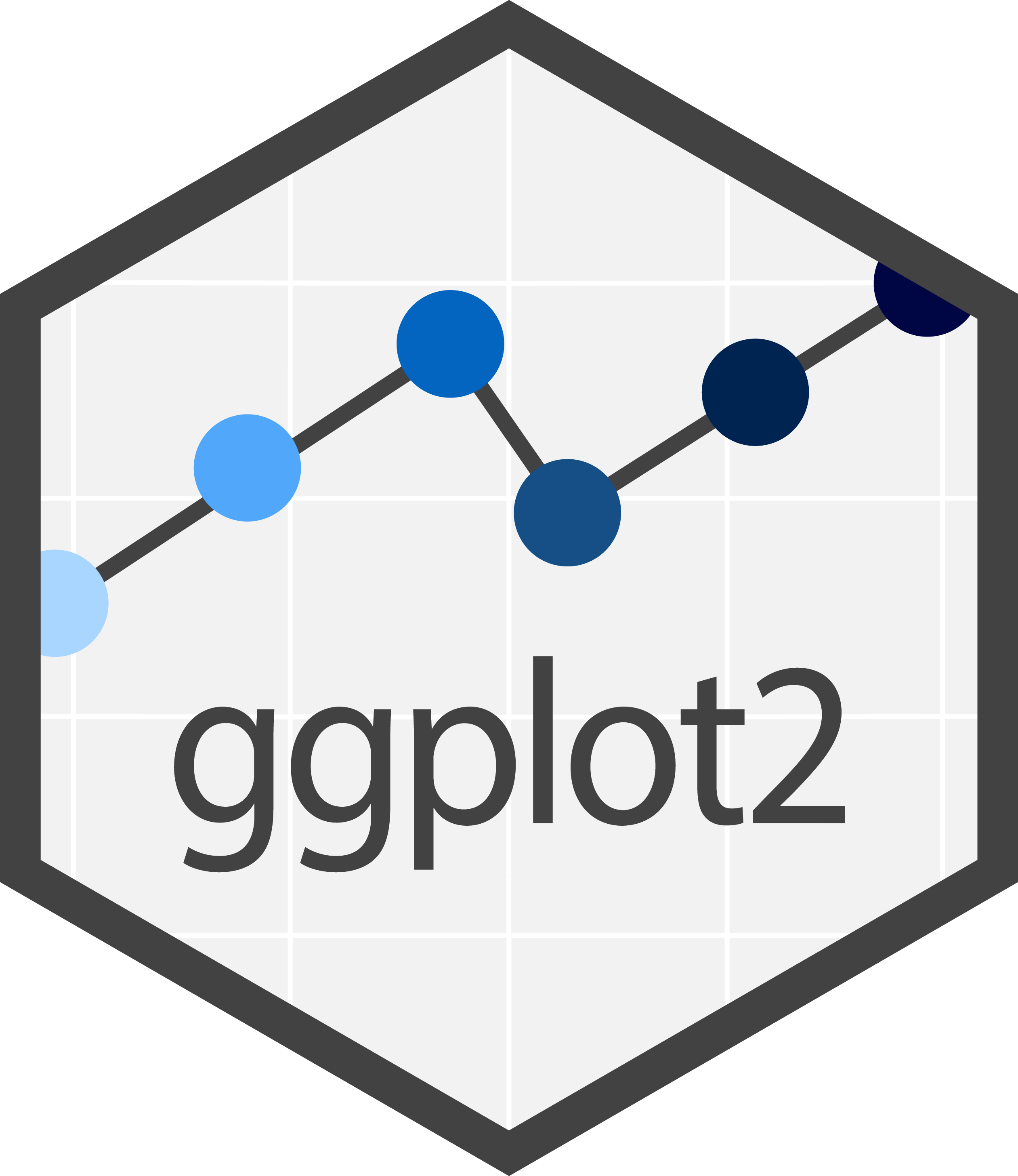
2. Combining figures with patchwork
3. Saving figures
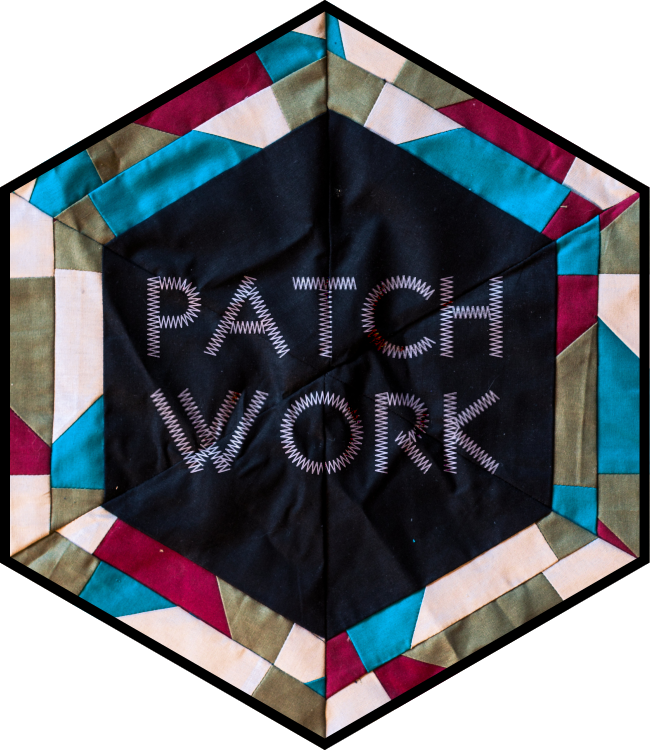
Artwork by @allison_horst
Our data set: Palmer Penguins!
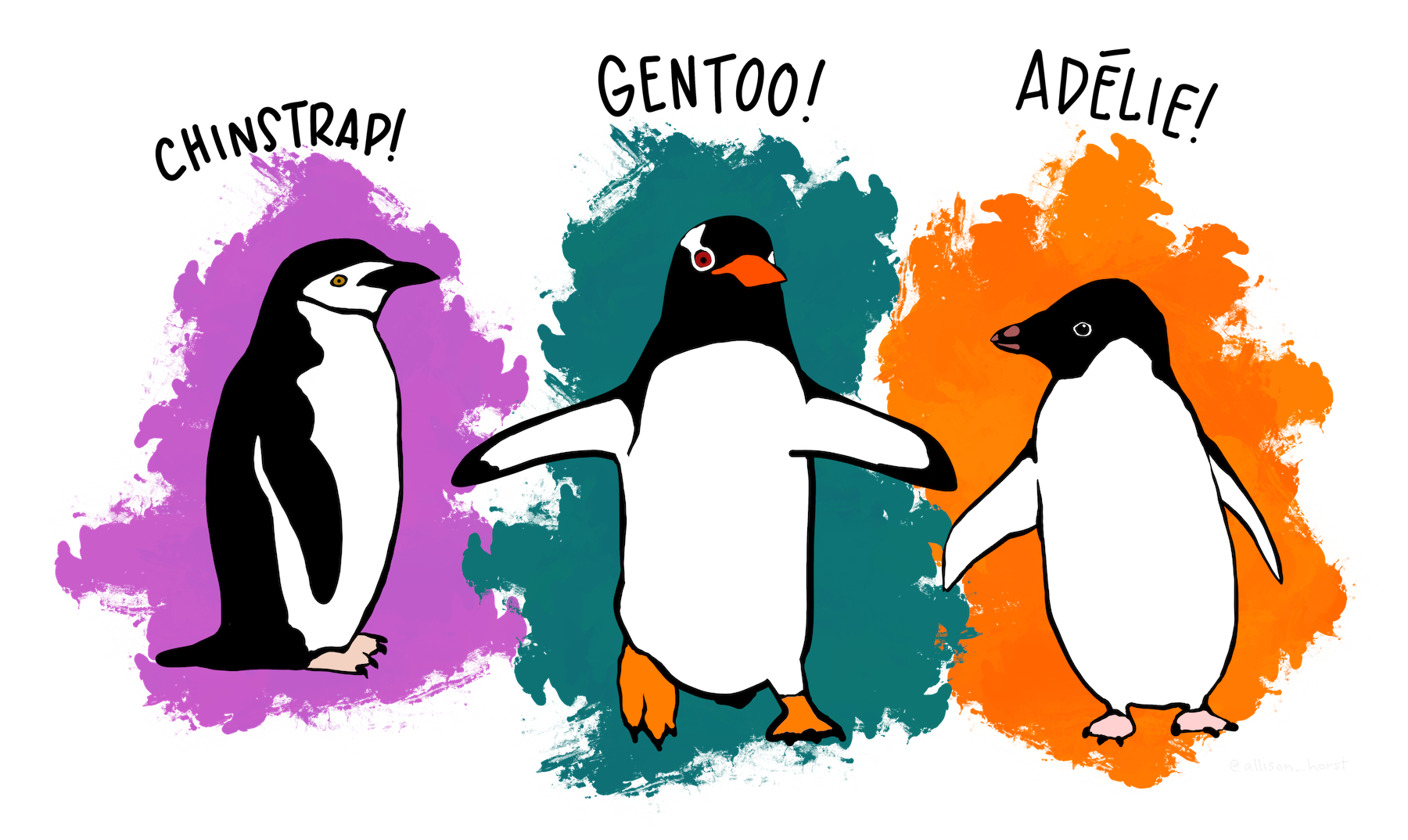
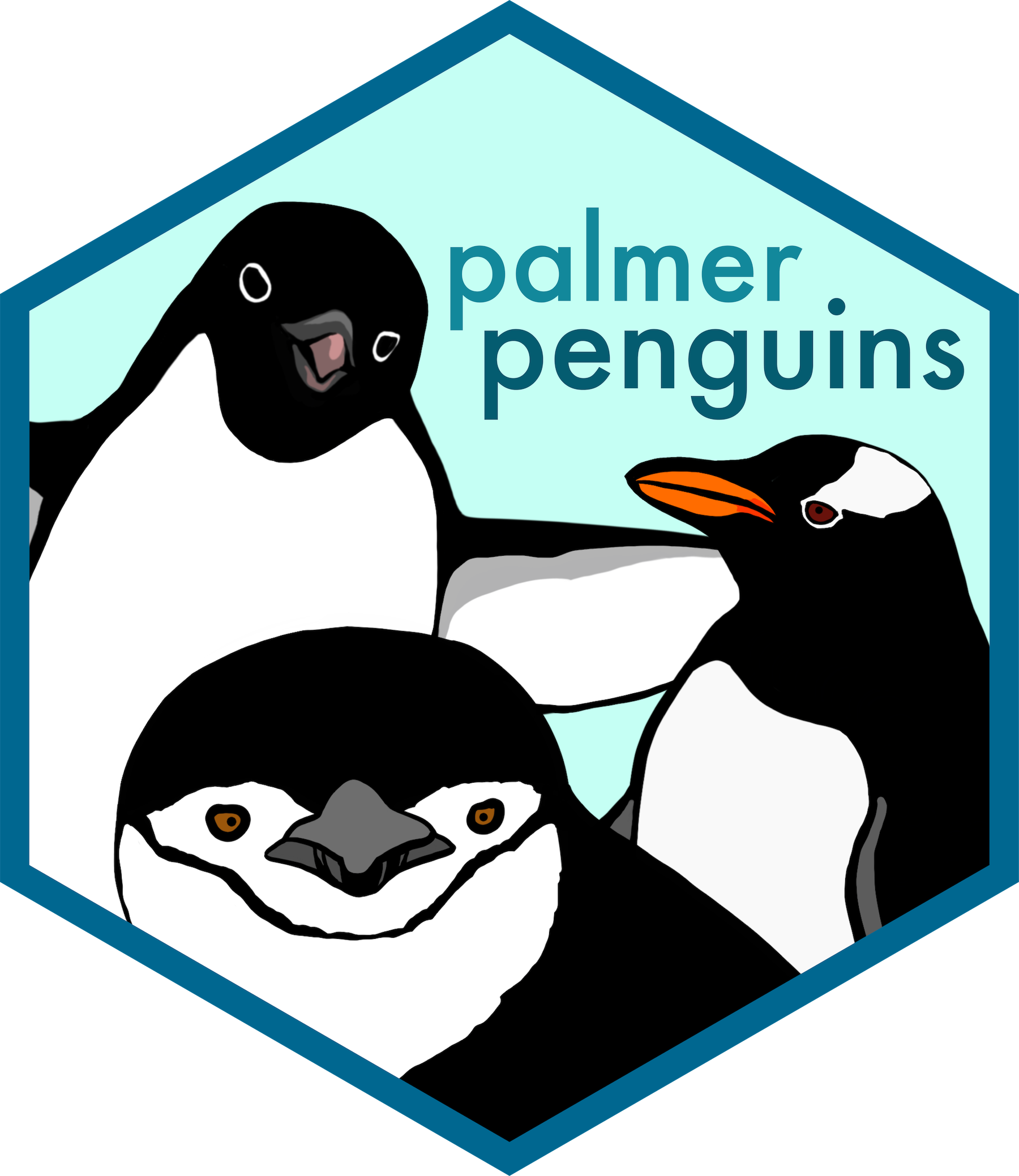
Artwork by @allison_horst
Our data set: Palmer Penguins!

Artwork by @allison_horst

Your turn!
Run this code and look at the output in the console
Side Note
Where did the penguins data set come from?
- Sometimes R packages contain data
- If you load a package (i.e.
library(palmerpenguins)) you can use the data - Note that here the data object is called
penguins(notpalmerpenguins) - Note this is NOT how you’ll load your own data
A basic plot
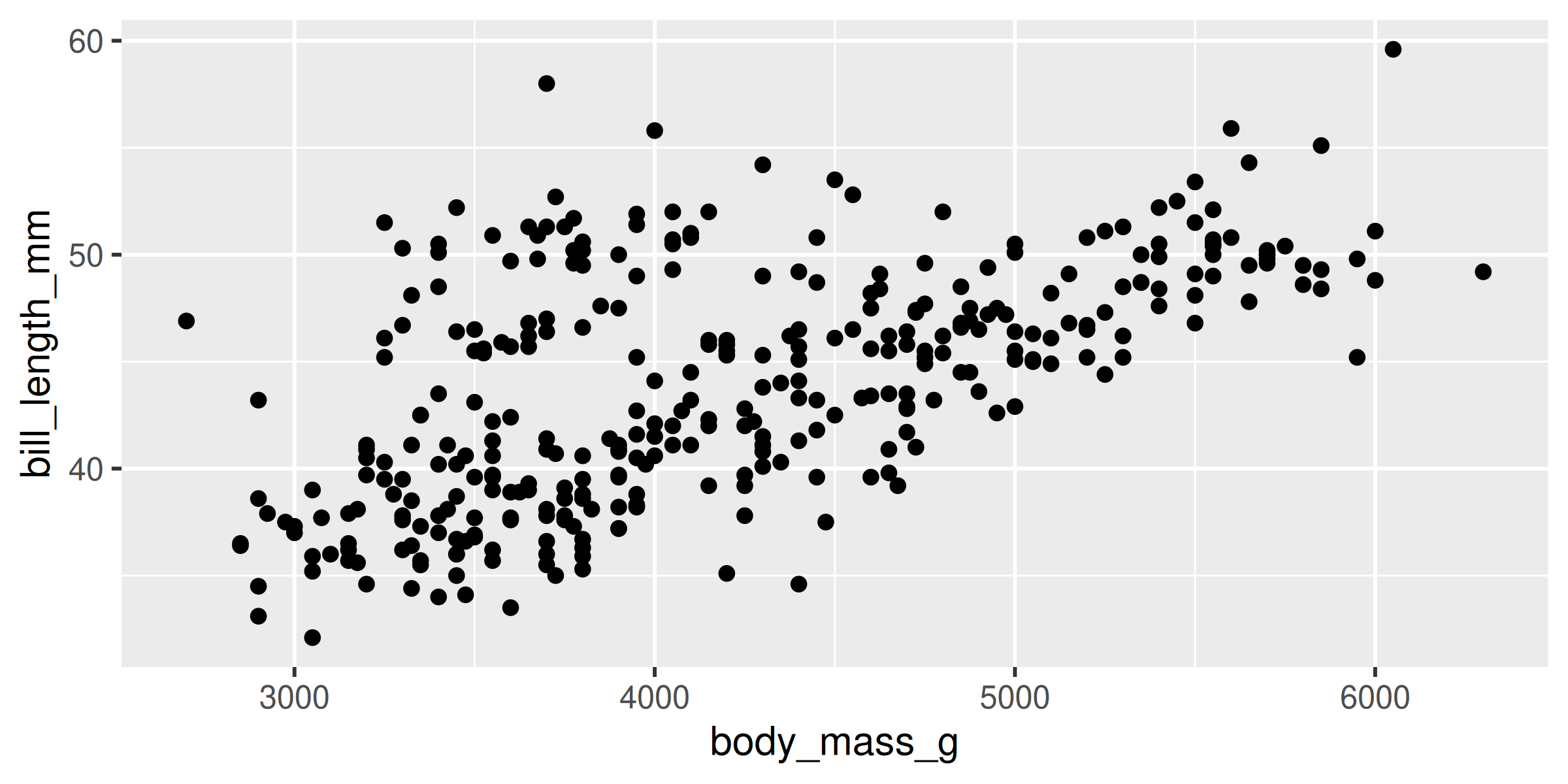
Break it down
library()
- Load the
palmerguinspackage - Now we have access to
penguinsdata

Break it down
library()
- Load the
tidyversepackages
(includesggplot2) - Now we have access to the
ggplot()function (andaes()andgeom_point()etc.)

Break it down
ggplot()
- Set the attributes of your plot
data= Datasetaes= Aesthetics (how the data are used)- Think of this as your plot defaults

Break it down
geom_point()
- Choose a
geomfunction to display the data - Always added to a
ggplot()call with+
ggplots are essentially layered objects, starting with a call to
ggplot()

Plots are layered
Plots are layered
You can add multiple layers
Plots are objects
Any ggplot can be saved as an object
More Geoms
(Plot types)
Geoms: Lines

Geoms: Boxplots

Geoms: Histogram

Note:
We only need 1 aesthetic here
Geoms: Barplots
Let ggplot count your data

Geoms: Barplots
You can also provide the counts

Your Turn: Create this plot
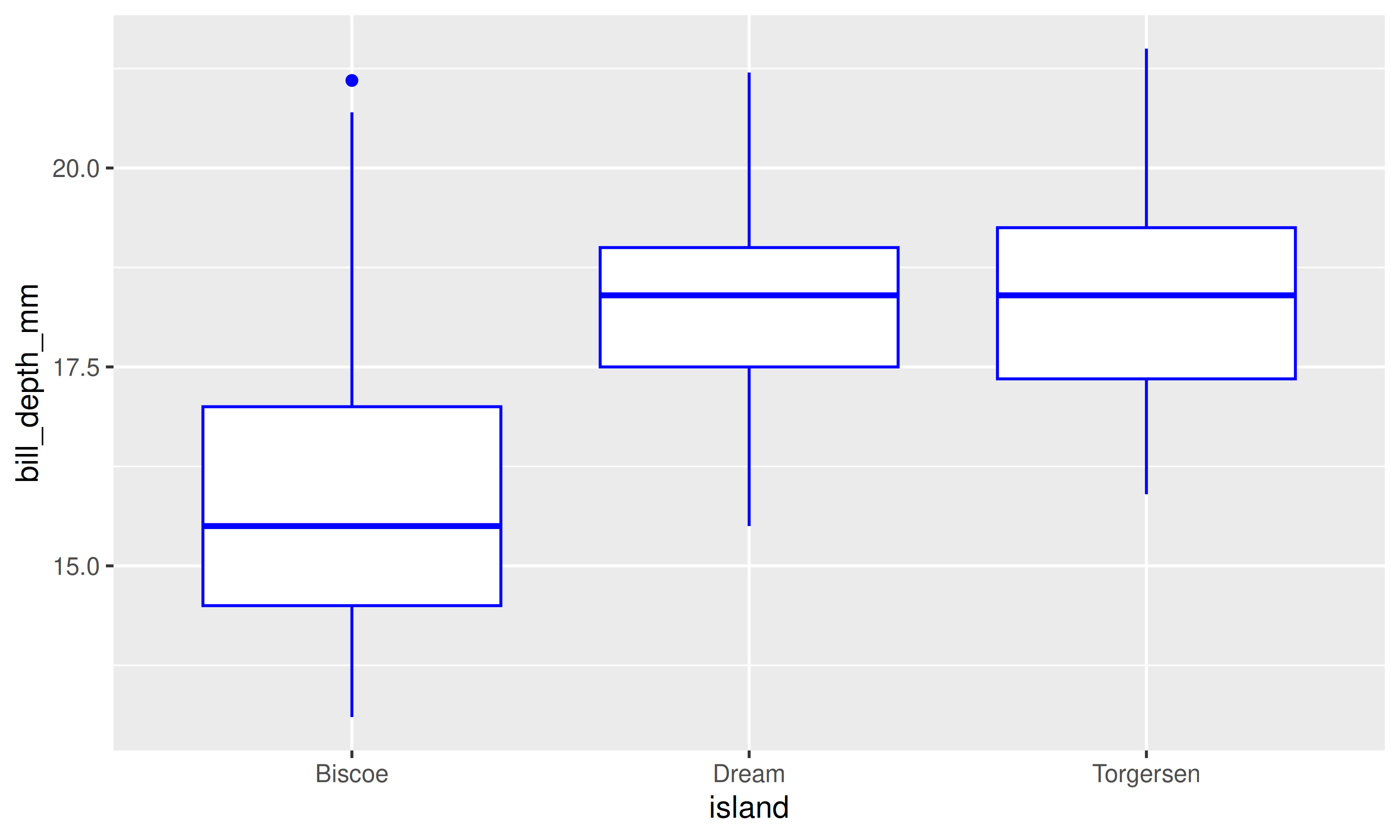
Too Easy?
Plot points on top
Why not consider jittering them?
Your Turn: Create this plot

Your Turn: Create this plot
Too Easy?

Your Turn: Create this plot
Too Easy?

Your Turn: Create this plot
Too Easy?

Showing data by group
Mapping aesthetics

Mapping aesthetics

Mapping aesthetics
ggplot automatically populates the legends (combining where it can)

Faceting: facet_wrap()

Split plots by one grouping variable
Faceting: facet_grid()

Split plots by two grouping variables
Your Turn: Create this plot
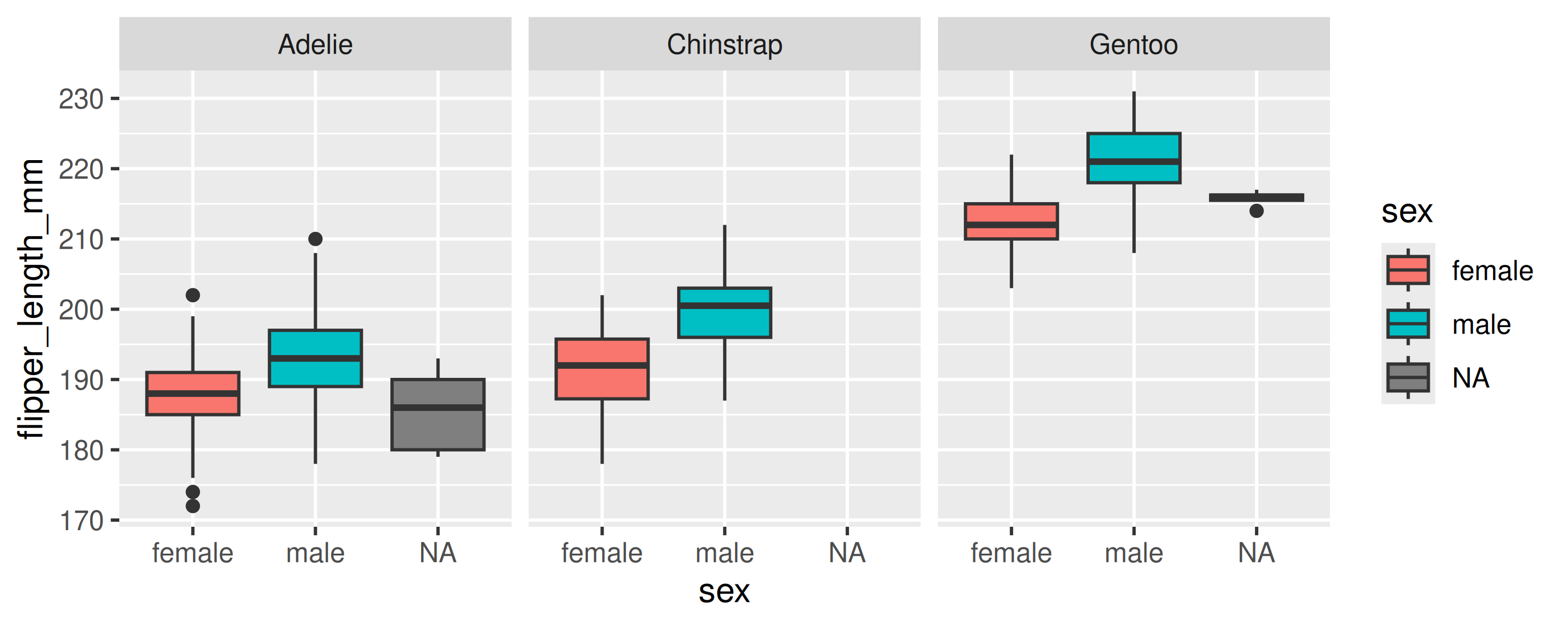
Hint:
colouris for outlining with a colour,fillis for ‘filling’ with a colour
Too Easy? Split boxplots by sex and island
Your Turn: Create this plot

Hint:
colouris for outlining with a colour,fillis for ‘filling’ with a colour
Too Easy? Split boxplots by sex and island
Your Turn: Create this plot
Too Easy?

Small change (
fill = sextofill = island) results in completely different plot
Adding Statistics to Plots
Summarizing data
Add data means as points

Summarizing data
Add error bars, calculated from the data

Trendlines / Regression Lines
Trendlines / Regression lines
geom_line() is connect-the-dots, not a trend or linear model

Not what we’re looking for
Trendlines / Regression lines
Let’s add a trend line properly
Start with basic plot:

Trendlines / Regression lines
Add the stat_smooth()
lmis for “linear model” (i.e. trendline)- grey ribbon = standard error

Trendlines / Regression lines
Add the stat_smooth()
- remove the grey ribbon
se = FALSE

Trendlines / Regression lines
A line for each group
- Specify group (here we use
colourto specifyspecies)

Trendlines / Regression lines
A line for each group
stat_smooth()automatically uses the same grouping

Trendlines / Regression lines
A line for each group AND overall

Your Turn: Create this plot
- A scatter plot: Flipper Length by Body Mass grouped by Species
- With a single regression line for the overall trend
Too Easy? Add regression lines for each species as well
Can you make the species lines larger?
Can you indicate which points are female and which are male?
Your Turn: Create this plot
- A scatter plot: Flipper Length by Body Mass grouped by Species
- With a single regression line for the overall trend

Your Turn: Create this plot
Too Easy?

Your Turn: Create this plot
Too Easy?

Customizing plots
Customizing: Starting plot
Let’s work with this plot

Customizing: Labels

Your Turn: Add proper labels to some of your previous plots
Customizing: Built-in themes

Customizing: Axes
scale_ + (x or y) + type (continuous, discrete, date, datetime)
scale_x_continuous()scale_y_discrete()- etc.
Common arguments
Let’s take a look…
Customizing: Axes
Breaks

Customizing: Axes
Limits

Customizing: Axes
Space between origin and axis start

Customizing: Aesthetics
Using scales
scale_ + aesthetic (colour, fill, size, etc.) + type (manual, continuous, datetime, etc.)

Customizing: Aesthetics
Using scales
Or be very explicit:

Customizing: Aesthetics
For colours, consider colour-blind-friendly scale
viridis_d for “discrete” data

Customizing: Aesthetics
For colours, consider colour-blind-friendly scale
viridis_c for “continuous” data

Customizing: Aesthetics
Forcing
Remove the association between a variable and an aesthetic

Note: When forcing, aesthetic is not inside aes()
Customizing: Legends placement
Your Turn: Create this plot
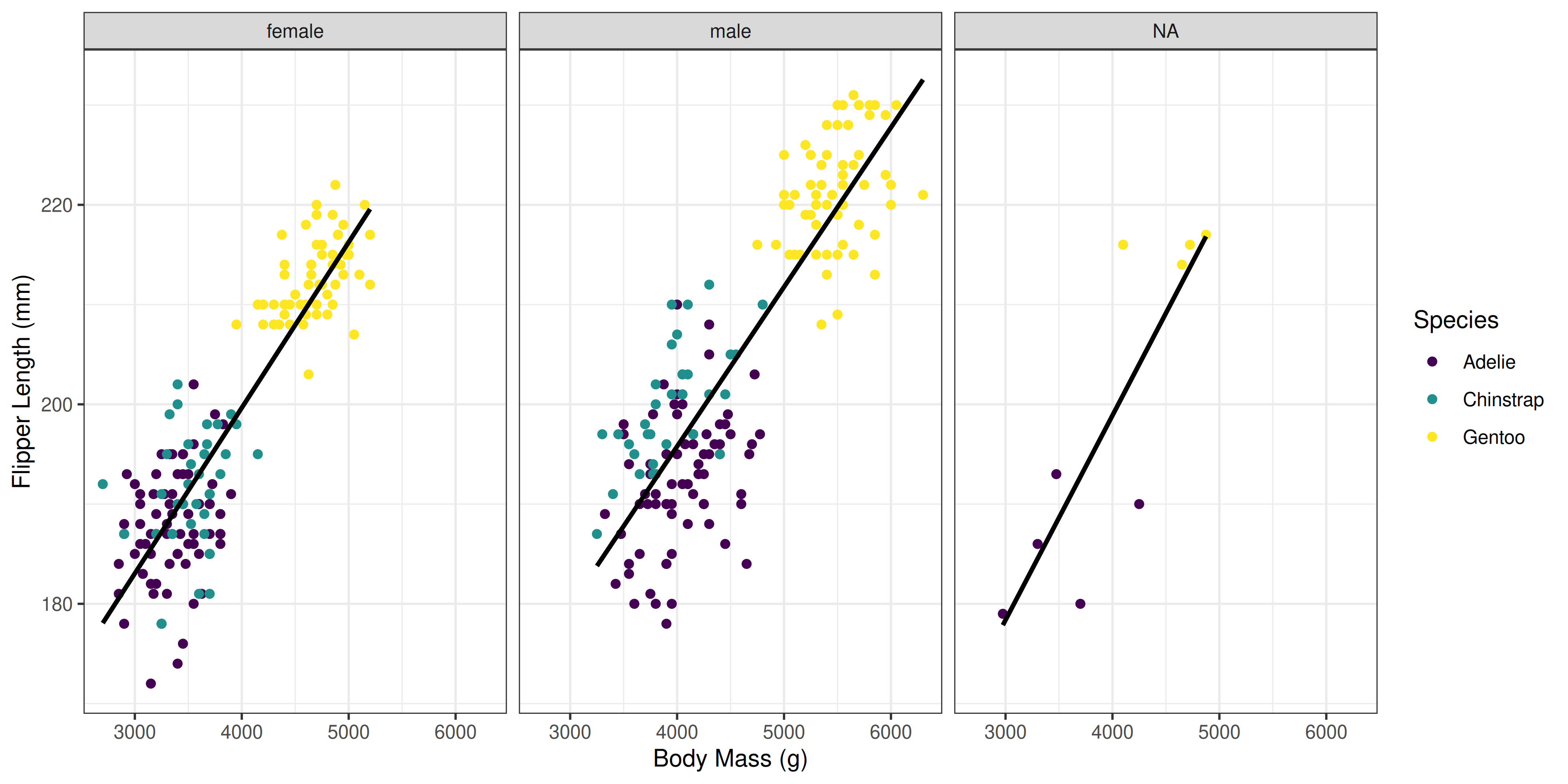
Too Easy?
Play with shape values >20 and fill and colour
Or, create a plot of your own data
Your Turn: Create this plot

Your Turn: Create this plot
Too easy?
ggplot(penguins, aes(x = body_mass_g, y = flipper_length_mm, fill = species)) +
theme_bw() +
geom_point(shape = 21) +
stat_smooth(method = "lm", se = FALSE, colour = "black", fill = NA) +
scale_fill_viridis_d() +
facet_wrap(~ sex) +
labs(x = "Body Mass (g)",
y = "Flipper Length (mm)",
colour = "Species")
Side note: Order of operations
Order of operations
Remember…
ggplot()is the default line (all options passed down)- The other lines are added with the
+(options only apply to this line)
Order of operations
Where to put the aes()?
Sometimes it doesn’t matter…
Order of operations
Where to put the aes()?
Sometimes it DOES matter…
Applies to ALL lines in the ggplot
including stat_smooth()
Applies to only the geom_point() in the ggplot
not stat_smooth()
Combining plots with patchwork
![]()
Artwork by @allison_horst
Combining plots
Setup
- Load
patchwork - Create a couple of different plots
library(patchwork)
g1 <- ggplot(data = penguins, aes(x = bill_length_mm, y = bill_depth_mm, colour = species)) +
geom_point()
g2 <- ggplot(data = penguins, aes(x = species, y = flipper_length_mm)) +
geom_boxplot()
g3 <- ggplot(data = penguins, aes(x = flipper_length_mm, y = body_mass_g, colour = species)) +
geom_point()Combining plots with patchwork
Side-by-Side 2 plots

Combining plots with patchwork
Side-by-Side 3 plots

Combining plots with patchwork
Stacked 2 plots

Combining plots with patchwork
More complex arrangements

Combining plots with patchwork
More complex arrangements

Combining plots with patchwork
“collect” common legends

Combining plots with patchwork
“collect” common legends

Combining plots with patchwork
Annotate

Your Turn
Combine any 3 figures Too Easy?
Can you figure out how to collect common axes as well?
Your Turn: Combine plots
Too easy?

Saving plots
Saving plots
RStudio Export
Demo
Saving plots
Publication quality plots
- Many publications require ‘lossless’ (pdf, svg, eps, ps) or high quality formats (tiff, png)
- Specific sizes corresponding to columns widths
- Minimum resolutions
Wrapping up: Common mistakes
- The package is
ggplot2, the function is justggplot() - Did you remember to put the
+at the end of the line? - Order matters!
- If you’re using custom
theme()’s, make sure you put these lines after bundled themes liketheme_bw(), or they will be overwritten
- If you’re using custom
- Variables like ‘year’ are treated as continuous, but are really categories
- Wrap them in
factor() - e.g.
ggplot(data = penguins, aes(x = factor(year), y = body_mass_g))
- Wrap them in
Wrapping up: Common mistakes
I get an error regarding an object that can’t be found or aesthetic length?
You are probably trying to plot two different datasets, and you make references to variables in the ggplot() call that don’t exist in one of the datasets:
n <- count(penguins, island)
ggplot(data = penguins, aes(x = flipper_length_mm, y = bill_length_mm, colour = species)) +
geom_point() +
facet_wrap(~ island) +
geom_text(data = n, aes(label = n),
x = -Inf, y = +Inf, hjust = 0, vjust = 1)Error in `geom_text()`:
! Problem while computing aesthetics.
ℹ Error occurred in the 2nd layer.
Caused by error:
! object 'species' not foundWrapping up: Common mistakes
I get an error regarding an object that can’t be found or aesthetic length?
Either move the aesthetic…

Wrapping up: Common mistakes
I get an error regarding an object that can’t be found or aesthetic length?
Either move the aesthetic…
Or assign it to NULL where it is missing…

Wrapping up: Further reading (all Free!)
- RStudio > Help > Cheatsheets > Data Visualization with ggplot2
ggplot2book v3 by Hadley Wickham, Danielle Navarro, and Thomas Lin Pedersenpatchworkwebsite- Cookbook for R by Winston Chang
- R for Data Science by Hadley Wickham and Garret Grolemund
- Data Visualization: A practical introduction by Kieran Healy














